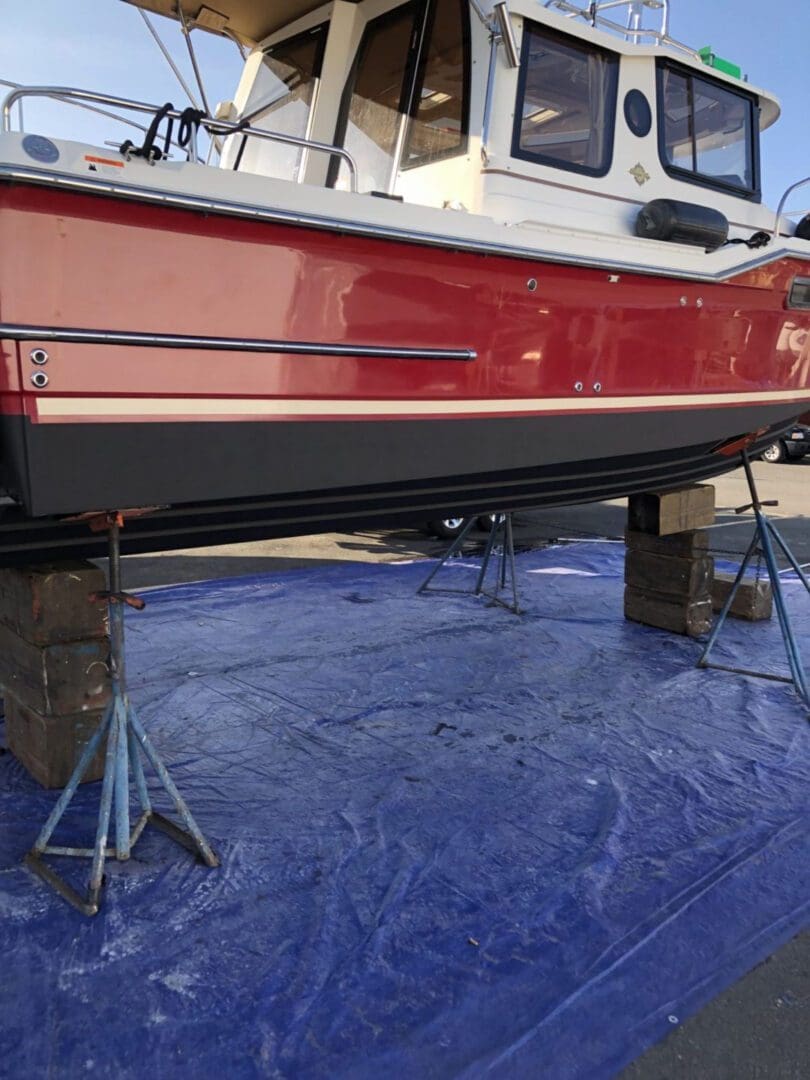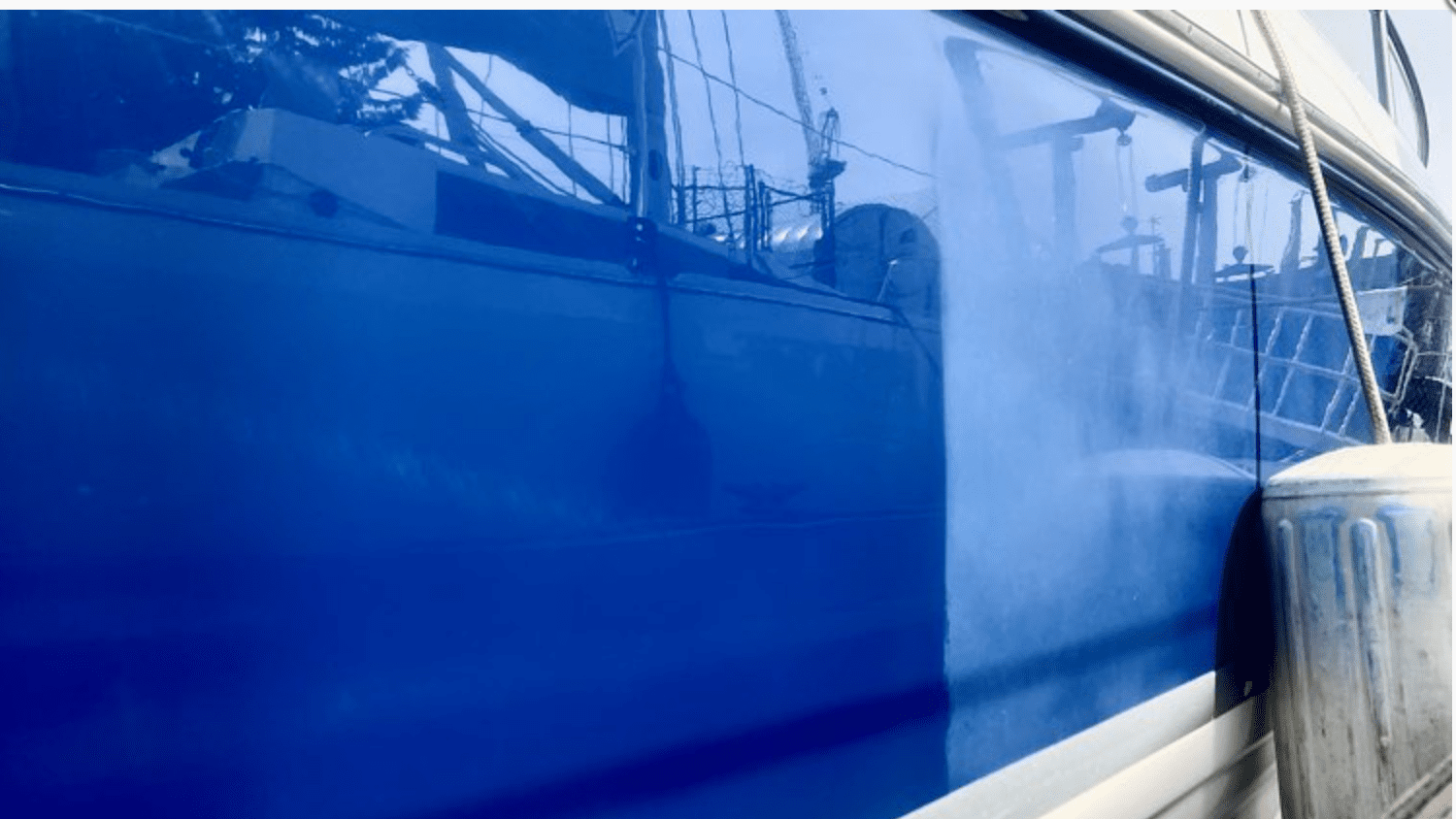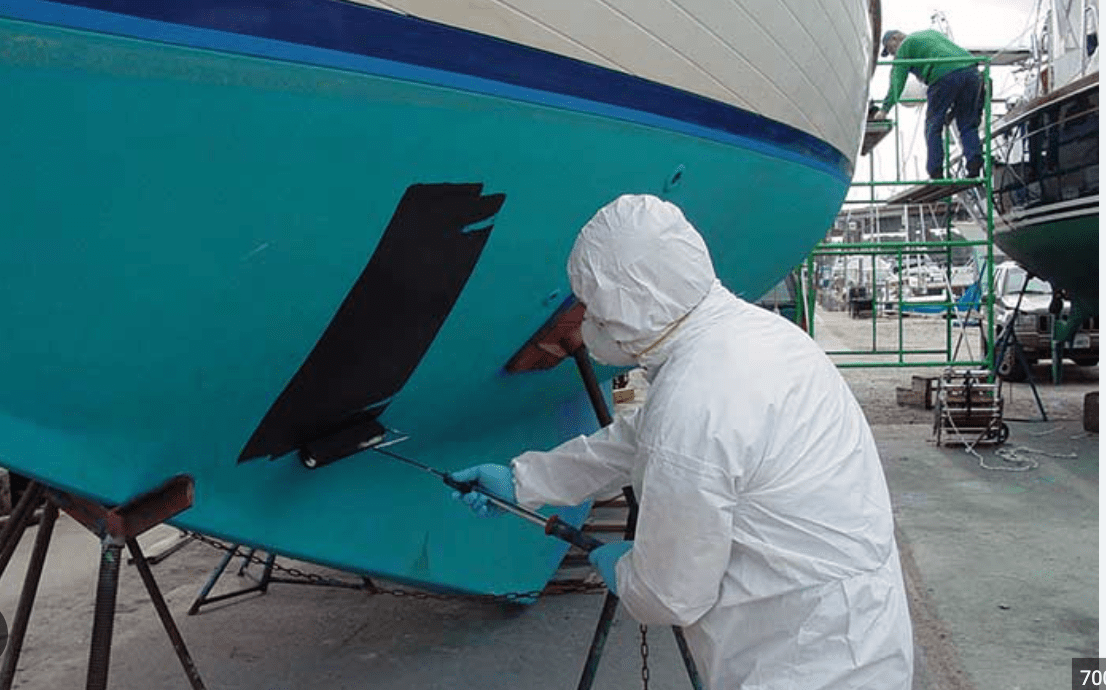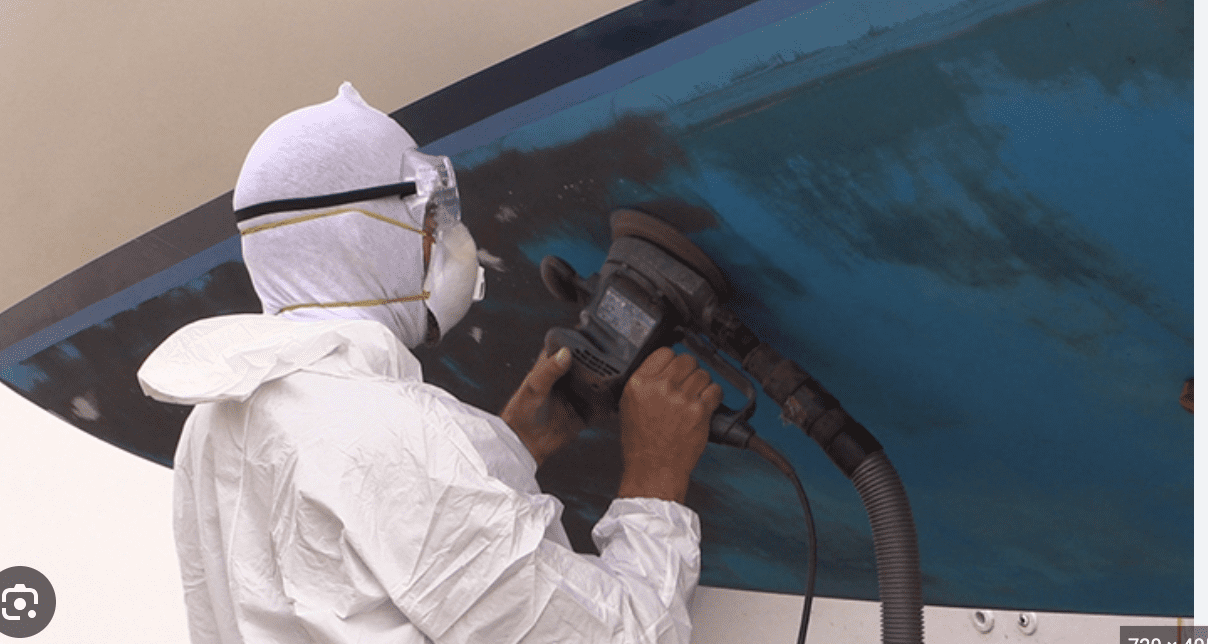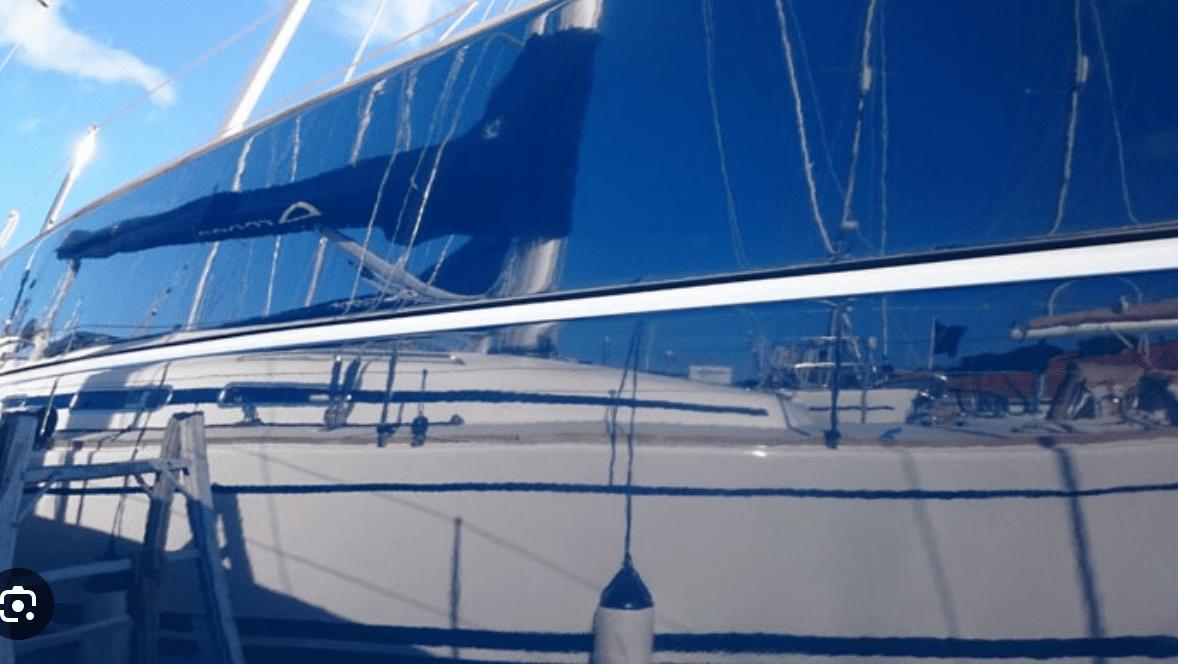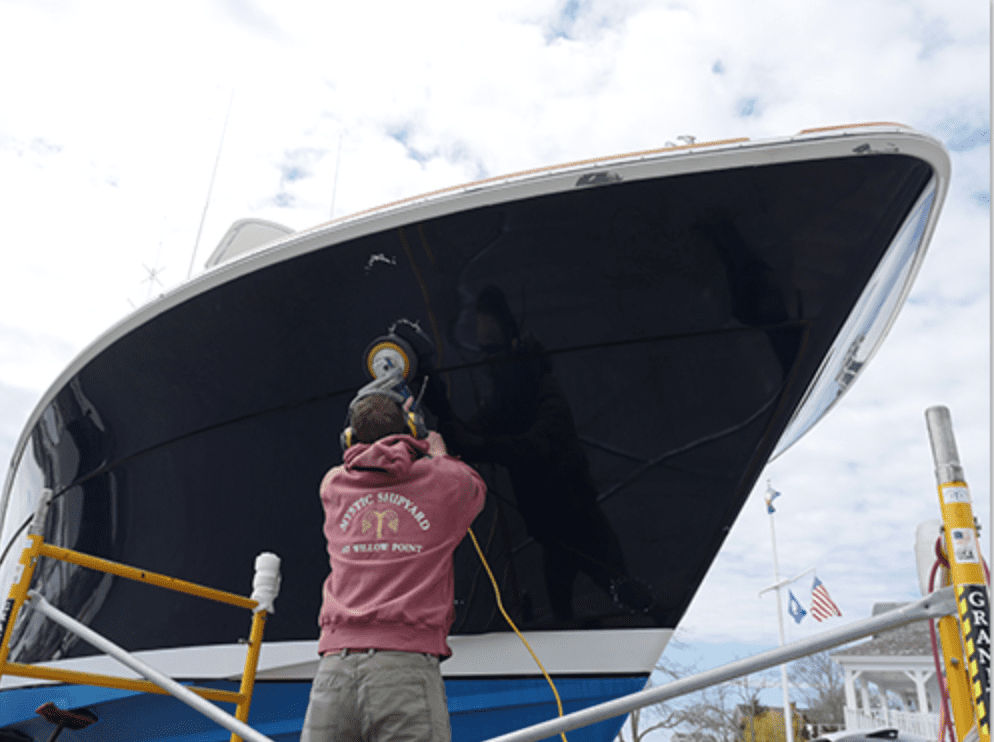Boat Bottom Painting in Seattle

Boat Bottom painting, buffing and waxing in Seattle
If a boat owner is planning on a quick haulout for bottom painting, and maybe a topside buff and wax job they don’t expect it to require a long stay in the boatyard. At Northwest Marine Fiberglass we take scheduling seriously and work to ensure that we are ready to begin work when the boat comes out of the water,and stay on it until the job is done.
Boat Bottom painting begins with sanding
Sanding is done with a vacuum sander using 80 grit paper. In cases where the bottom paint is lifting and peeling more time is spent to feather it in, and in some cases rough areas are first hit with 40 grit paper.
The time it takes to sand a bottom is dependent on the condition of the existing bottom, especially the amount of marine growth. We have seen trim tabs that were covered in a mass of mussels 6 inches thick, and propellers that were so encrusted with barnacles that the shape was obscured, looking more like a club than a propellor. For the most part though, sanding the bottom of a boat from a 40-foot sailboat to a 65-foot power boat can be done in a day or less.


Estimated cost of bottom sanding
We can usually provide an accurate bottom sanding estimate with just the boat make and length, and a little information about the general condition of the bottom, and the length of time since the last haul out.
Bottom stripping
Occasionally we encounter a bottom that is adhering so poorly that even though thoroughly sanded to a nice-looking finish it just falls away on to the paint roller, making it very difficult to apply the new paint. We are usually able to push through and get the job done, but then advise the owner that next time the boat is out for bottom painting it will probably need to be stripped.
A bottom strip job requires tenting for containment and more aggressive machines and abrasives, as well as application of an epoxy barrier coat prior to painting. It costs significantly more than a normal bottom sanding, and we are happy to provide an estimate.
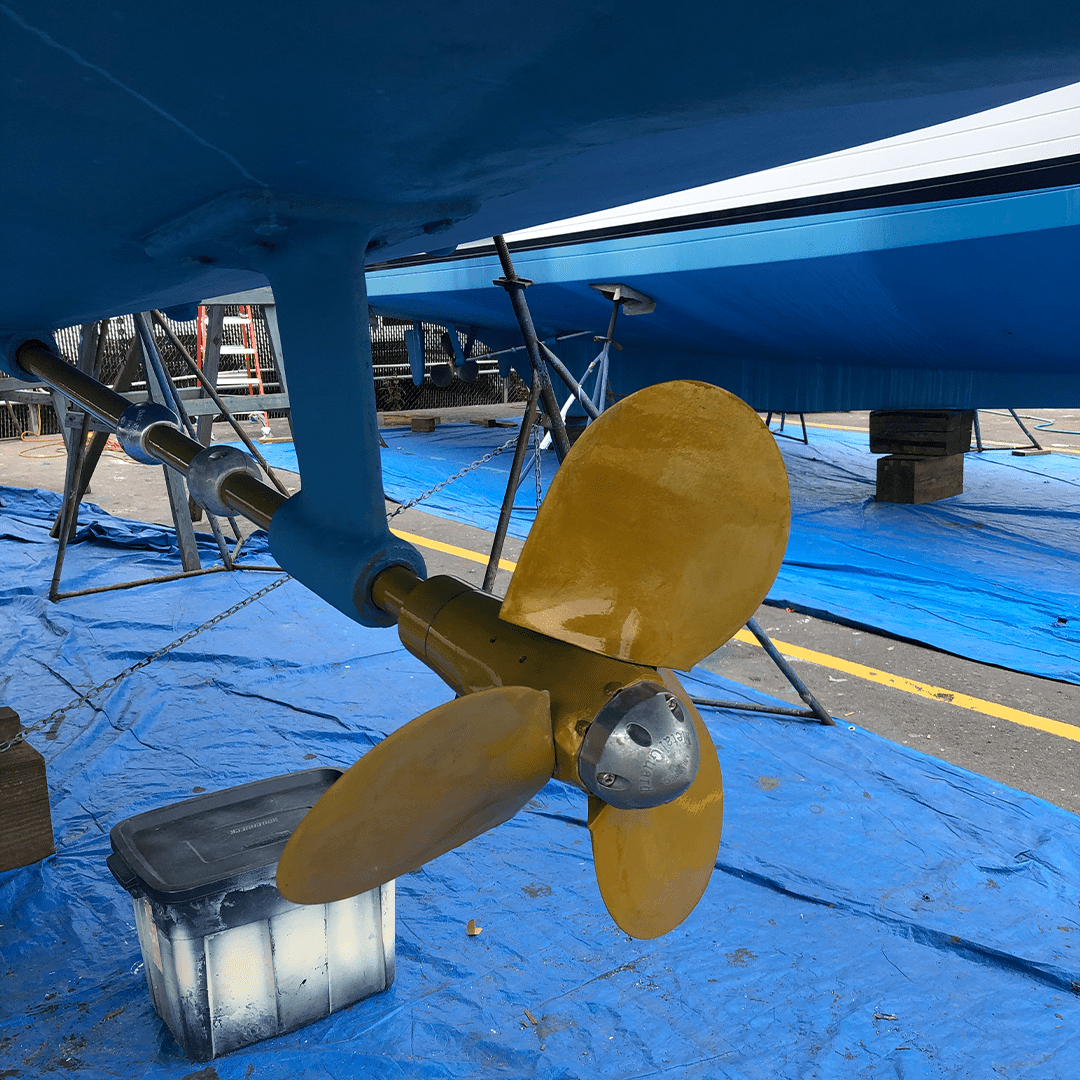
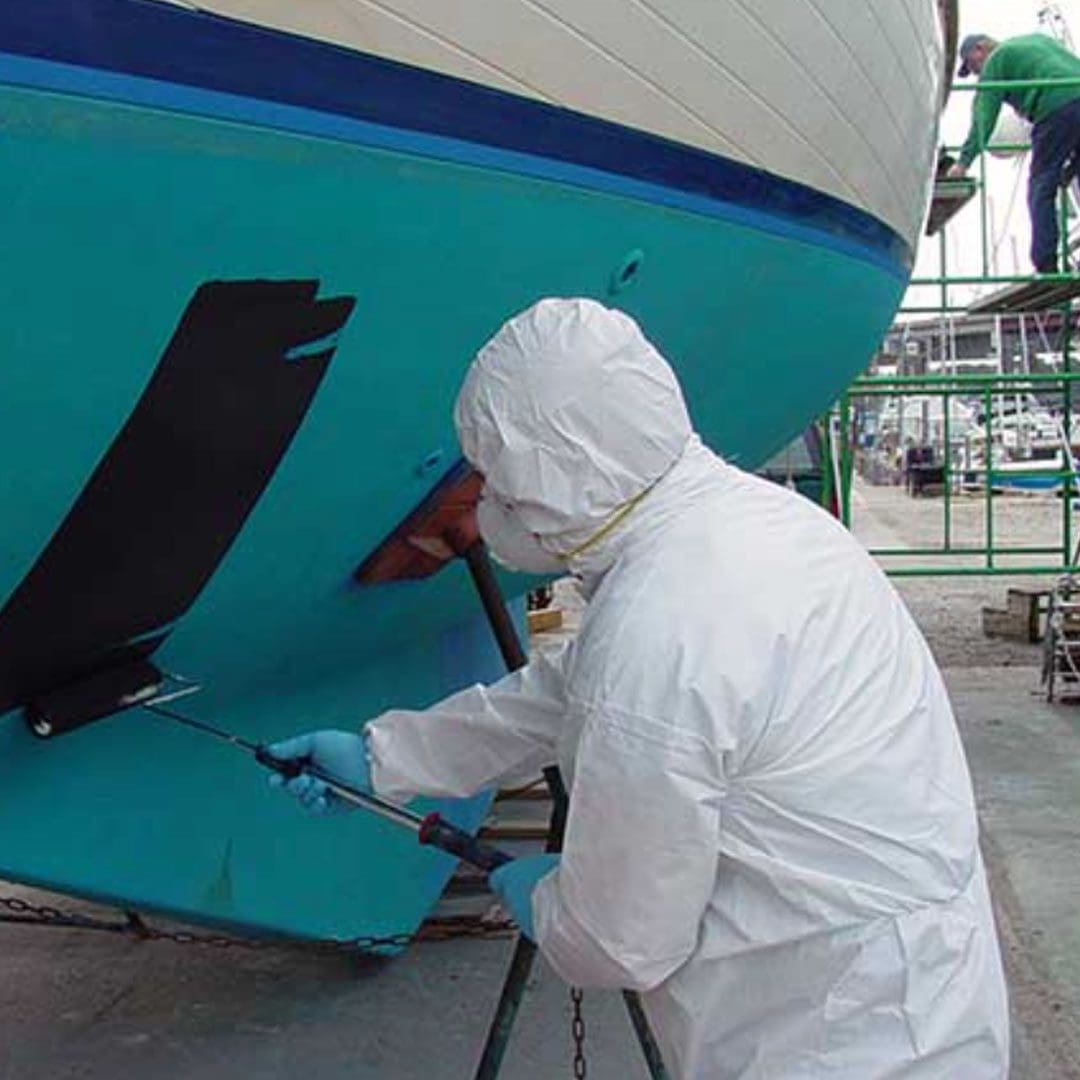
Bottom Painting
In most cases we apply two coats of antifouling paint as recommended by the paint manufacturers. Occasionally we encounter a boat that is always kept in fresh water, and has existing hard antifouling paint. In this case, if the owner requests it, we will go with one coat.
Ablative antifouling paint wears away (very slowly) exposing fresh antifouling agents. The process is slow, so that when a boat comes out and is pressure washed for repainting in two or three years there is no indication that any paint has worn away. The advantage of an ablative paint is that it does not build up over time, creating a thick crust of bottom paint which can eventually (after many years it must be said) get so heavy that it doesn’t want to adhere. We recommend always using an ablative paint over an existing ablative bottom as hard paint over an ablative paint has more potential for adhesion problems.
Hard antifouling paint, also called modified epoxy bottom paint is as the name implies, a harder finish. It is more suitable for more high-speed boats and trailered boats due to the durability of the surface. Boat owners who want to be able to have divers periodically scrub the bottom are better off with a hard paint that won’t scrub off and produce a paint cloud in the harbor. It is acceptable to put either hard or ablative bottom paint over an existing hard bottom.
Bottom paint costs vary, but with a few exceptions generally cost between the $250 and $375 per gallon. Some cost under $200 per gallon, and some cost over $400 per gallon. The amount of paint needed for two coats depends on the type and size of the boat. A 40’ full keel sailboat usually requires 3 gallons for two coats. A 55-to-60-foot power boat generally uses between 5 and six gallons.Painting a bottom is a one day job. We can provide an accurate estimate in advance without seeing the boat.
Buffing and waxing
Many boat owners take the opportunity to have the topsides buffed and waxed while the boat is hauled out for bottom painting. On deck areas can be taken care of by mobile detailers in the marina, but it is difficult for them to do a thorough job on the topsides especially down by the boot top stripe and waterline.

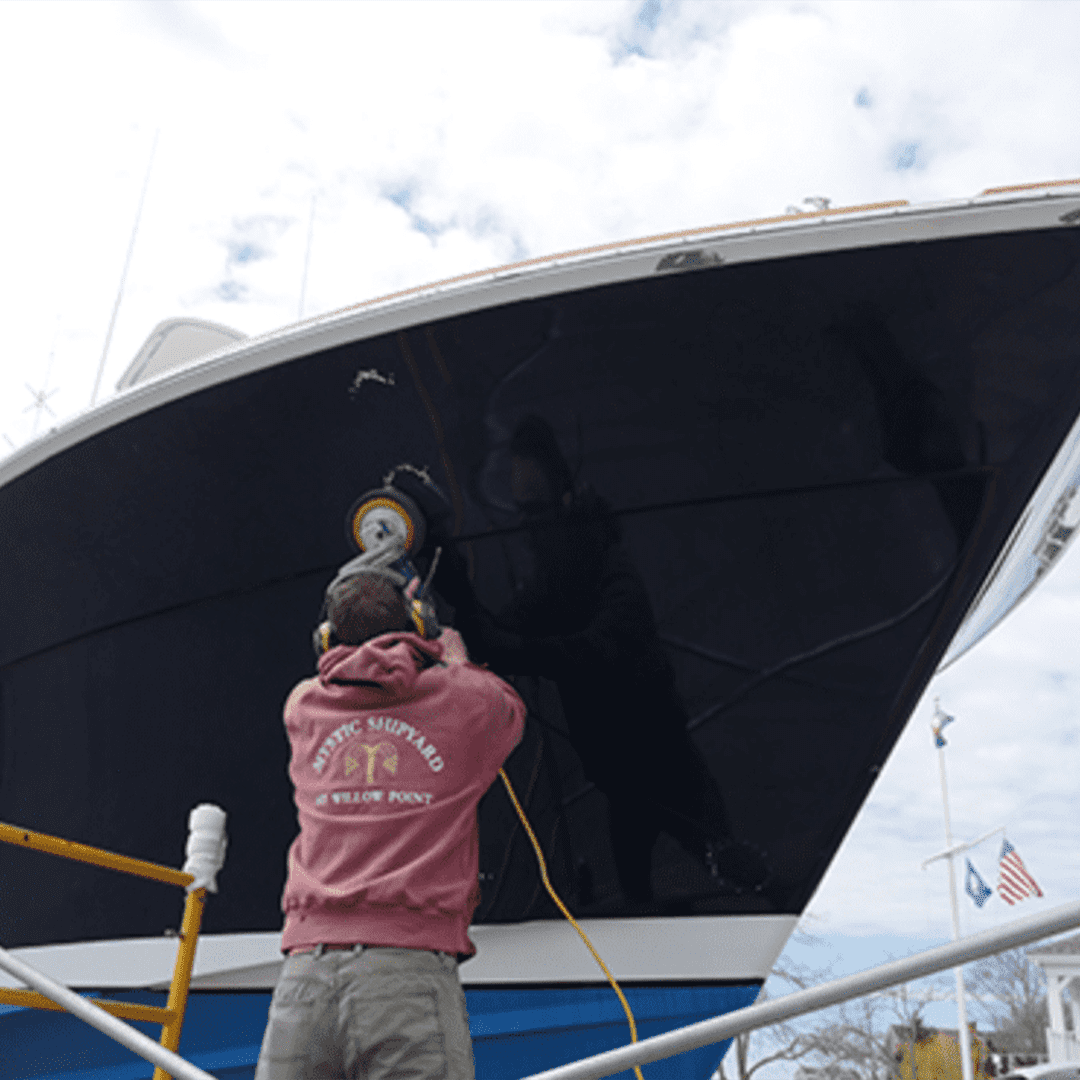
The process
Staging is set up around the boat. Heavy salt build up is removed with a damp rag. The boat is machine buffed with rubbing compound, then waxed for UV protection. In most cases this is enough to produce a long-lasting high gloss finish.
In cases where the gelcoat is flatter and more faded it may be necessary to begin with a heavy-duty compound,then go through the normal process. In extreme cases compounds are not enough and we need to begin with sanding the hull, sometimes starting with 400 grit and working all the way up 2000 grit before buffing and waxing.
Buffing and waxing costs vary, but most boats are in reasonable condition and don’t require extra steps. Most can be buffed and waxed in a day or a day and a half. With a little information about the boat model, size, year, and general condition we can provide an estimate. If the boat shows up in worse shape than we anticipated we provide a new estimate to be reviewed and approved before beginning any work.
FAQ
The cost to have a boat’s bottom painted depends upon the size and condition of the boat’s bottom, and the paint choice. Some bottoms can be sanded in four hours and others can take two men a full day.Paint prices vary, with some costing under $200/gallon, and others over $400/gallon, but most cost between $275/gallon and $375/gallon. A 40’ full keel sailboat takes 3 gallons for two coats, and a 55’ to 60’ power boat takes between 5 and 6 gallons. With the boats’ make and length, and some information about the condition of the boats’ bottom we can provide a bottom painting estimate in advance without seeing the boat.
The first step in bottom painting is pressure washing the bottom to remove marine growth and slime. This happens when the boat is hauled out of the water.
Pressure washing doesn’t remove persistent growth like mussels and barnacles and doesn’t always get rid of stubborn oil stains or scum lines at the waterline, so these must be cleaned off prior to sanding.
The bottom is vacuum sanded with 80 grit abrasive discs. Extra work may be required to feather in areas where the old paint is flaking. In areas where the old paint is in very poor condition in is sometimes necessary to hit those spots with 40 grit first, the go over them again with 80 grit.
The waterline is masked, and two coats of bottom paint are applied by roller. Tight areas are done with a brush.
We will use any paint that an owner requests but if they don’t have a preference, we usually use Sea Hawk Cukote where an ablative paint is advisable, and Petit Trinidad HD when a hard paint is best.
Other materials used are abrasive vacuum sanding discs, we prefer Abranet because it is effective, and because it is very good at dust collection.
Roloc abrasive discs are used along with sandpaper on props and shafts.
In addition to paint and abrasives there are brushes, rollers, rags, solvent, buckets, masking tape, coveralls, latex gloves respirator cartridges, and coveralls.
Antifouling paints discourage marine growth on a boats’ bottom. Less marine growth means better performance and speed, as well as lower fuel consumption.
Where the boat is moored can make a difference in how long a bottom paint job will last. There are places where mussels and barnacles thrive more than they do in others.
In these cases the bottom may need to be re painted every year, but for most boats kept in salt water an owner should expect to get two years out of a new bottom, sometimes three.
If a boat is kept in fresh water, it can go a long time without being repainted. We have seen freshwater boats that haven’t been painted for five years haul out with nothing more than a heavy layer of soft growth and slime that came off with pressure washing. The boats’ speed and fuel consumption were probably not the best, but there were no mussels or barnacles.
Most boat bottoms can be sanded and painted in two days.
Not having antifouling paint on a boats bottom will not cause any structural harm to the hull, but it will lead to lower speed, sluggish handling, and higher fuel consumption.
For an estimate:
Hit the Get in touch button on any page on the website or click here to contact us
Email us at [email protected]
Or call (206) 423-7683

